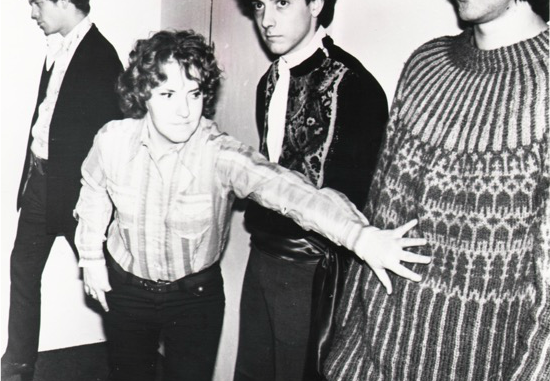
“Peel slowly and see.”
These four words can be found on the original vinyl copies of The Velvet Underground & Nico, intended to instruct the listener to slowly remove the banana peel sticker on the cover to reveal the soft fruit underneath. It also, as it would turn out, somewhat predicted the reception of the album itself, which was initially met with an uninspiring and bewildered response due to its shrill experimental instrumentation and lurid subject matter.
However, following the critical acclaim of the band’s self-titled third album and the general commercial success of front man Lou Reed’s solo career, music critics began to reevaluate The Velvet Underground’s debut record (and, to a lesser extent, their sophomore album White Light/White Heat) and retroactively hailed it as a masterpiece. Fifty years later, The Velvet Underground & Nico remains both a turning point in rock music history and a profoundly insightful account of ‘60s drug culture ever pressed to vinyl.
In the pantheon of great American songwriters, Lou Reed receives insufficient credit. Though he may not have charted large-scale cultural shifts like Bob Dylan or brought nuance to conventional blue-collar American exceptionalism like Bruce Springsteen, Reed paints a vividly austere portrait of America’s underbelly that delves into some of its most prominent taboos — hardcore drug abuse, bondage and prostitution, to name a few.
Unlike Dylan or Springsteen, who often wrote from an outsider’s perspective, Reed’s songwriting often presents itself like a firsthand account. Those experiences could be chalked up to his time spent with countercultural icon Andy Warhol, who briefly managed the band in its early years and held sole producer credit on their debut album. He also designed the album cover, in case his massive signature on the front wasn’t clear enough. Though Warhol’s production credits may have been exaggerated — band member John Cale once cited record producer Tom Wilson as the primary creative force in the production booth — his influence can be found on tracks like “Femme Fatale” and “All Tomorrow’s Parties,” both of which were lyrically inspired by members of Warhol’s clique and feature lead vocals from German fashion model Nico, who joined the project at Warhol’s behest. Nico’s dynamic and colorful delivery serves as a delicious complementary foil to Reed’s achromatic whine, which falls more in line with the album’s old-school rock n’ roll flavor.
Much of that flavor comes courtesy of the aforementioned John Cale and his wildly bold use of the electric viola, which proves just as integral to the album’s storytelling as Reed’s words. In “Venus in Furs” (named after the Leopold von Sacher-Masoch novella and similarly dealing with themes of sadomasochism) Cale elicits unsettling shrieks from his instrument that hang in the background as Reed explores the relationship between dominant and submissive and reflects on his own desires to be sexually dominated.
As if the exaltation of sexual bondage wasn’t socially preternatural enough in 1967, Reed’s unique brand of counter-cultural reflection reaches its apotheosis on “Heroin,” arguably the most controversial song in the band’s history. With lines like “When I put a spike into my vein / And I tell you things aren’t quite the same,” it’s evident that Reed had intended to neither extol the benefits of the drug nor admonish its dangerous side effects. Rather, “Heroin” attempts to translate the ups and downs of a heroin high into song, the soft guitars at the track’s opening and even Reed’s own vocals eventually drowned out by Cale’s increasingly chaotic and cacophonous viola and drummer Maureen Tucker’s palpitatory percussion by its climax.
The serendipity of this album’s creation has been well discussed and documented; similar to how life on Earth could not exist were our planet slightly closer to or farther from the Sun, were it not for the happenstances leading up to this album’s release — Reed meeting Cale during their employment at Pickwick Records, jazz-oriented Verve Records’ risky decision to release an artsy proto-punk project and Reed’s commercial success following his departure from the band in 1970, among others — rock music may not have been the same today.
Without The Velvet Underground & Nico, would we have The Clash or Dead Kennedys? Would My Bloody Valentine have introduced the similarly helter-skelter genre of shoegaze to the quasi-mainstream in the late ‘80s and early ‘90s? Would garage rock and grunge have been as integral to defining the angst of an entire generation, assuming those genres could exist at all without The Velvet Underground? It is impossible to say for sure, as those are questions of a hypothetical reality, alternate from our own.
In this reality, though, a perfect storm of coincidence and collaboration gave way to a flawless album that continues to proclaim its position as a landmark work in contemporary music, even half a century after it came and went with barely a whisper.
